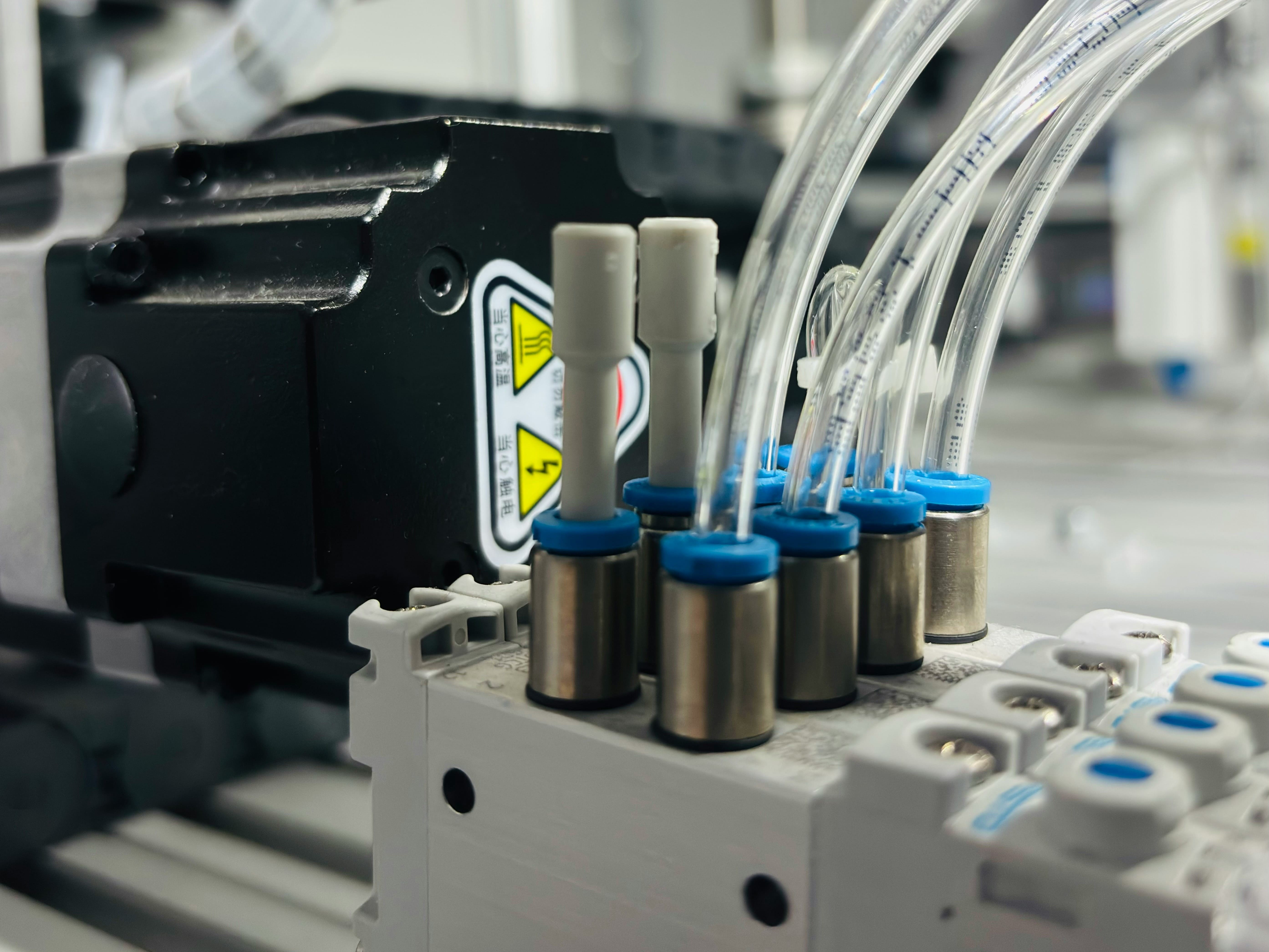Views: 37 Author: Site Editor Publish Time: 2025-10-23 Origin: Site
As global industries move toward green and low-carbon transformation, the chemical sector faces mounting pressure to cut energy consumption and emissions. While production efficiency has always been a focus, sustainability is now equally critical. One often overlooked contributor to greener chemical plants lies in an unexpected place — the pneumatic system.
From precise control of valves to dust-free material handling, pneumatic components are proving to be powerful tools for both energy conservation and pollution reduction. Here's how they are reshaping modern chemical production.

Unlike electric or hydraulic systems, pneumatic systems rely on compressed air — a cleaner and more flexible energy source. They consume less energy, require minimal maintenance, and eliminate the risk of oil leaks or contamination.
In a typical chemical plant, pneumatic technology powers operations such as reactor mixing, valve actuation, and material conveying. For example, replacing electric actuators with pneumatic control valves can reduce energy use by up to 15–20%, while maintaining precise flow and pressure control.
Modern pneumatic systems can also be combined with smart sensors to adjust air pressure and flow automatically. This "on-demand air supply" prevents unnecessary air loss, optimizing energy use throughout the production cycle.
Energy efficiency is only one part of the story — pneumatic components also help minimize pollution and emissions.
Hydraulic systems are notorious for leaks, which cause oil contamination and waste-liquid emissions. Pneumatic systems, powered by air, avoid this issue entirely. Moreover, pneumatic dust removal units capture fine particles during powder processing, packaging, or spraying, significantly improving air quality inside workshops.
| System Type | Typical Pollution Risk | Maintenance Cost | Leakage Impact |
| Hydraulic | Oil leakage, waste liquid | High | Severe environmental risk |
| Pneumatic | No oil pollution | Low | None |
By reducing dust and waste emissions, pneumatic systems not only protect the environment but also create a healthier and safer workplace for employees.
Traditional compressed air networks often suffer from energy losses due to pressure drops and leaks. Upgrading to energy-efficient pneumatic components is a cost-effective way to reverse this trend.
Key examples include:
Low-power pneumatic valves – reduce air consumption while maintaining performance, e.g. 2V025 Series
Energy-saving cylinders – designed with lightweight materials and low-friction seals, e.g. C(D)M2B Series
High-efficiency air compressors – provide stable air supply with improved compression ratios, e.g. G Series
Smart pneumatic control systems can go a step further by monitoring air flow in real time, identifying leaks, and automatically balancing pressure. Some advanced setups even use waste heat recovery from the compressor to preheat materials or plant facilities — boosting total energy utilization.
Chemical plants are also major sources of volatile organic compounds (VOCs) and greenhouse gases. Pneumatic technology offers multiple ways to tackle this problem:
Pneumatic spray systems minimize solvent evaporation and improve coating efficiency.
Air-powered exhaust treatment units use adsorption and filtration to remove harmful gases.
Pneumatic cooling systems replace traditional high-energy chillers, reducing CO₂ output.
By switching to pneumatic environmental systems, companies can effectively cut emissions without sacrificing process performance.
The next step for pneumatic systems is intelligence. With the rise of IoT (Internet of Things) and big data analytics, chemical companies can now integrate pneumatic components into a connected ecosystem.
Smart pneumatic systems can:
Collect and analyze real-time operational data
Predict maintenance needs before breakdowns occur
Adjust air distribution strategies based on demand
This means fewer production interruptions, less wasted energy, and reduced emissions from equipment failures — a win-win for efficiency and sustainability.
For chemical plants looking to accelerate their green transformation, here are some practical strategies:
Audit your current air system – Identify leaks and inefficiencies in the compressed air network.
Upgrade to energy-saving pneumatic valves and actuators.
Integrate intelligent monitoring systems to track air usage and detect anomalies.
Adopt pneumatic dust and gas treatment solutions to control emissions at the source.
These steps not only save energy and reduce pollution but also enhance plant reliability and reduce downtime costs.
Pneumatic components are no longer just simple air-driven tools — they're vital assets in the chemical industry's journey toward green, efficient, and intelligent production. By combining energy-saving designs with digital control and pollution prevention, pneumatic technology is helping chemical enterprises achieve both economic and environmental sustainability.
WAALPC Pneumatics provides innovative pneumatic solutions designed to meet the evolving needs of the chemical sector — improving energy efficiency, reducing emissions, and enabling a cleaner, safer, and smarter future.
Contact us today to learn how our pneumatic systems can support your company's sustainability goals.
Email: tina@waalpc.com
Website: www.waalpc.com